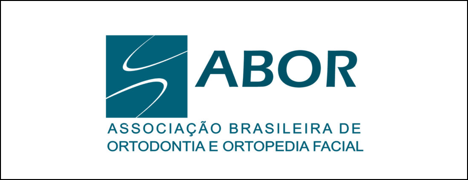This month I have the pleasure to interview Dr. Shadi Samawi, author and idealizer of the blog The Orthodontic Notefile, a website from which I had the opportunity to learn a lot.
We asked Dr. Shadi about his clinical tips based on his e-books “The 4 keys to mastery of orthodontic finishing” and “Straight wire orthodontics”, both freely avaliable from his website.
Dr. Shadi S. Samawi BDS, MMedSci(Orth), MOrthRCSED is a Specialist Orthodontist and a Founding partner/Owner of Samawi Dental & Orthodontic Center, the leading Specialty Orthodontic Center in West Amman, Jordan since 1999. He is also a Consultant Orthodontist in Manama, The Kingdom of Bahrain.
Over the past 18 years, his major orthodontic interests have included topics such as the management of post-orthodontic demineralisation, Digital Technology related to Orthodontics – including Digital Photography, Radiography, & Practice Management Software, & has been a long-time practitioner of the MBT Treatment Philosophy & Self-ligating systems; most notably the Damon System.
He has previously self-published two editions of the popular eBook A Short Guide to Clinical Digital Photography in Orthodontics in 2008 and 2011, as well as the newly-published Straight-Wire Orthodontics: A Short Guide to Principles and Technique (2014) and From Good to Great: The 4 Keys to Mastery of Orthodontic Finishing (2015). He also has a very special interest in Photography – as a serious hobby – as well as Web & Graphic Design, Hiking and more recently; Blogging. He regularly lectures in multiple venues and through online webinars, and is currently presenting his comprehensive Hands-On Course on Clinical Dental Photography both in Jordan & abroad.
He runs his “Orthodontic Success” blog; The Orthodontic Notefile (www.theorthodonticnotefile.blog)
Ortodontia Descomplicada – In your e-book “The 4 Keys to Mastery of Orthodontic Finishing”, you remind us of the importance of the bond up appointment. What are your tips for a successful bonding procedure?
Shadi Samawi – As I mention in the ebook, there are several clinical tips recommended for a successful bonding procedure such as, for example, using a bracket height gauge for the anterior teeth – even if you are an experienced clinician! – to ensure proper leveling and alignment, aligned gingival zeniths anteriorly and, of course, creating/protecting a beautiful Smile Arc for each patient. However, the most important key to a successful bonding procedure is proper planning prior to the procedure itself, such as planning certain bracket positions, bite- raising or selecting variable torques, depending on each clinical case.
The second key idea is systemization; having a clear, step-by-step, reproducible bonding protocol that is routinely performed at each bonding procedure. The clarity and repetition involved would exponentially compound over time allowing the clinician to reach a state of complete mastery of the procedure in minimal time and with minimal stress for everyone involved.
A third key would have to be Patience!; Taking enough time to perform a proper bond-up pays huge dividends later in treatment in terms of smoother progression, anchorage conservation and less need for bracket repositioning or complex archwire finishing bends towards the end of treatment.

OD – You adopt a systematic approach for reevaluating your brackets positions mid-treatment. What issues do you look for at this stage and what steps can be taken to overcome them?
SS – At this stage, the key point here is to systematically check for issues related to leveling and alignment, root torque and angulation, and derotation of teeth. These include issues such as incomplete derotations, marginal ridge and contact point discrepancies, and abnormal tooth angulations, particularly in the anterior area but also in the premolar regions as the initial difficulty in accessing some premolars during initial bond-up can frequently cause abnormal crown tipping of premolars. Checking crown torques through dental mirrors from an occlusal perspective would help in spotting torque differences that may indicate improper vertical positioning of certain brackets. An OPG is a valuable aid here, especially for checking root position discrepancies.
A sound bonding protocol at the initial bonding procedure would minimize most issues that need to be dealt with at this stage. The best timing for this Pano/Repo step would be after at least one visit in rectangular Niti archwires, and before moving into stainless steel working archwires.
OD – What would you say are fundamental concepts to be applied on the finishing stage of the treatment?
SS – Our goal for each patient should be the achievement of a well-aligned, functional and stable occlusion that enhances and protects a harmonious facial profile, an aesthetically-pleasing smile arc and of course, an overall improved dental health.
Remembering Dr. Andrews’ Six Keys to Normal Occlusion, we should focus on mesio-distal crown angulations, for maximum aesthetics; and on proper torque and vertical leveling of contact points and marginal ridges for achieving the best possible interdigitation of the dentition.
We should always keep in mind that proper finishing starts before bond-up! “Begin with the End in Mind.”, as the saying goes.
OD – You have some very interesting tips regarding the bracket positioning as described in your e-book Straight Wire Orthodontics. Would you care to share them with our readers?
SS – Bracket positioning may well be considered the KEY factor in achieving the best aesthetic and functional result possible. Traditional teaching states that brackets should be placed in the center of the Facial surface of the Clinical Crown (FACC), with the long axis along the Facial Axis of the Clinical Crown of each tooth. Of course, in clinical practice, orthodontists often take “creative liberty” with this recommendation according to individual tooth position, rotation and ease of initial access. Variations in position can be made in cases where there are sever rotations (bracket placed more mesially or distally), where there is considerable gingival swelling obstructing complete view of the clinical crown or height, and with abnormally-shaped or worn out teeth in general.
Smile Arc Protection in the anterior area should be a priority during bonding, and it’s also important to remember to bond 2nd molars slightly more occlusal than the 1st molars (approx. 0.5mm) in order to minimize over-extrusion posteriorly, especially in High-Angle cases. The reader can find more tips in the “Straight-Wire Orthodontics” ebook as well as in “The 4 Keys to Mastery of Orthodontic Finishing” ebook.

OD – What are your choices regarding the wires sequence during orthodontic treatment?
SS – This is an interesting question! My personal philosophy is to always try to keep things simple; as simple as reasonably possible, therefore I normally stick to a sequence of 3 to 4 progressive archwires in most cases, especially in non-extraction cases, which constitute more than %85 of cases in my practice and using 0.022” slot. In my ebook “Straight-Wire Orthodontics”, I mentioned a certain sequence that many practicing orthodontists employ for the majority of their cases, myself included. However lately I have modified that sequence slightly for the sake of using even lighter orthodontic forces. Now, I generally start with a light 0.012” Niti round archwire for practically all my cases, which I leave in place for a a couple of visits at least, which allows initial tooth alignment with very light forces and minimal patient discomfort. Then, I usually move on to a 0.016”x 0.016 “ or 0.016”x 0.022” Heat-Activated NiTi to complete leveling , alignment and derotation and I leave this archwire for a couple of visits as well.
Later on, I might move into an 0.018”x0.025” NiTi wire for at least one visit for root control, in preparation for a 0.019”x0.025 TMA wire in non-extraction cases, or a 0.019”x0.025” stainless steel working archwire in extraction cases (although occasionally I would prefer to close spaces on 0.017”x0.025” stainless steel instead). I may use round SS intermediary wires in cases were I need better sliding such as when shifting midlines or when offsetting Base archwires for impacted canines. I usually prefer finishing in TMA archwires in general which can be especially helpful for adding finishing offsets and torque addition manually when needed.
The key is to leave each archwire in place “to cook”, so to speak, and not to hastily change it simply for the sake of changing it! The detrimental effects of hasty archwire changes on leveling, alignment and anchorage control are well-known to all.
OD – What are your clinical tips regarding anchorage control?
SS – Anchorage control start at the treatment planning stage! Bracket prescription selection is important. Anchorage control should be incorporated in all phases of treatment starting at the bond-up appointment; where careful, proper bonding of each individual bracket is vital to minimize any anchorage loss through inaccurate tipping / leveling of teeth. Use of lacebacks as advocated by the MBT™ Treatment philosophy can be quite helpful in the early stages as well in most cases. The traditional means for re-enforcing anchorage are of course, well known to all; auxiliaries such as palatal arches, inter-maxillary elastics and headgear. However, the “holy grail” of anchorage re-enforcement in current practice would have to be the use of mini-screws, which provide virtually absolute anchorage.
The single, most over-looked tip I could probably mention would be the inclusion (bonding) of the upper and/or lower 2nd molars as early as possible during treatment. When used with wire “cinch-backs”, bonding the 2nd permanent molars can be very helpful in maintaining anchorage and minimizing incisor proclination during initial alignment.
OD -The straight-wire technique reduces chair-side time and simplifies the mechanics during orthodontic treatment, but on the contrary of what it is frequently believed, they do not make archwire bending unnecessary. Could you tell us a bit about the archwires adjustments frequently used on the straight-wire technique?
SS – As I mention in the ebook, and I quote: “ It is completely wrong – and dangerous – to believe that with the SWA, we can simply remove an archwire from the package and insert it into the mouth, expecting the wire and appliance to do the rest of the work for us!” .. Therefore, the main “adjustment would be choosing the suitable archform for each patient and maintaining the general archform for every patient throughout treatment. Thereafter, most necessary adjustments would include 1st (in-out), 2nd (vertical or mesio-distal tip) and 3rd order (torque) bends, depending on the particular need for each tooth or segment of teeth. It is important to keep in mind the need for simplicity and patient comfort and safety when consider the type of wire adjustments and bends to be used in each clinical situation. By following the proper fundamentals, the need for these archwire adjustments will be kept to a minimum.
It is worth also mentioning that Curve of Spee adjustment (increased or decreased) is also one common adjustment that is required in many cases to help flatten the occlusal plane as required by Andrews’ Six Keys to Normal Occlusion.
OD – In your ebooks in general, you seem to mainly focus on the Basics related to clinical orthodontics. Is there a belief behind that behavior?
SS – I’ve always believed in the saying “Success lies in brilliant execution of the fundamentals.” That’s why in most of my eBooks, I try to simplify, clarify and remind the reader of basic ideas and concepts in Orthodontics. I do this for myself in the first degree because I believe it’s very easy to loose sight of the basics when we are being overwhelmed and inundated with massive amounts of research, data and new techniques and appliances, at the current rate we are experiencing right now!..
We can easily focus on the “New” while forgetting the “Essential” that underlines the latest technique or appliance, and thus struggle with achieving good results and become frustrated. This is as true “seasoned” clinicians – who may easily drift into a certain way of doing things by simple force of habit and forget the foundations, as it is true for new orthodontic graduates who have yet to accumulate sufficient clinical experience.
The saying; “Be willing to be a beginner every single morning.” holds a lot of deep truth in it, in my opinion, and is a good one to keep in mind, always.
Cirurgião-dentista, especialista em ortodontia pela ABO-GO com 10 anos de experiência. Mestre e doutorando em ciências da saúde pela UFG. Professor nas universidades Fasam e Integra, membro da diretoria da Associação Brasileira de Ortodontia (ABOR-GO). Credenciado no sistema Invisalign e apaixonado por ensino, música e tecnologia. Artigos publicados neste blog, sites e revistas científicas.




















